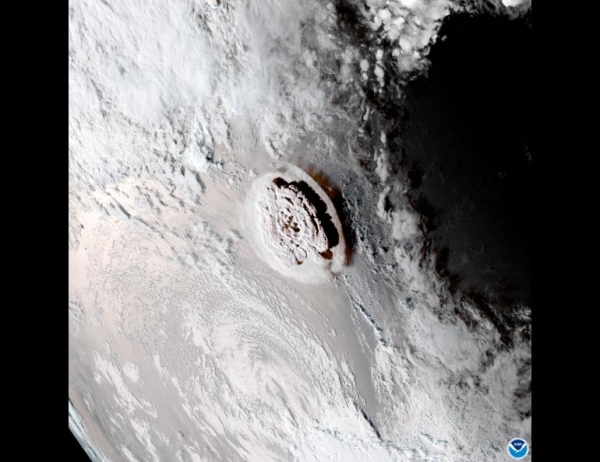The massive Jan. 15, 2022, eruption of the Hunga submarine volcano in the South Pacific Ocean created a variety of atmospheric wave types, including booms heard 6,200 miles away in Alaska. It also created an atmospheric pulse that caused an unusual tsunami-like disturbance that arrived at Pacific shores sooner than the actual tsunami.
Those are among the many observations reported by a team of 76 scientists from 17 nations that researched the eruption’s atmospheric waves, the largest known from a volcano since the 1883 Krakatau eruption. The team’s work, compiled in an unusually short amount of time due to significant scientific interest in the eruption, was published today in the journal Science.
David Fee, director of the Wilson Alaska Technical Center at the University of Alaska Fairbanks Geophysical Institute, is a leading author of the research paper and among four of the center's researchers involved in the work.
The Hunga eruption, near the island of Tonga, has provided unprecedented insight into the behavior of some atmospheric waves. A dense network of barometers, infrasound sensors and seismometers in Alaska — operated by the Geophysical Institute’s Wilson Alaska Technical Center, Alaska Volcano Observatory and Alaska Earthquake Center — contributed to the data.
Read more at: University of Alaska Fairbanks
The Hunga eruption image is from the GOES-17 satelite of the National Oceanic and Atmospheric Administration (Photo Credit: NOAA)


